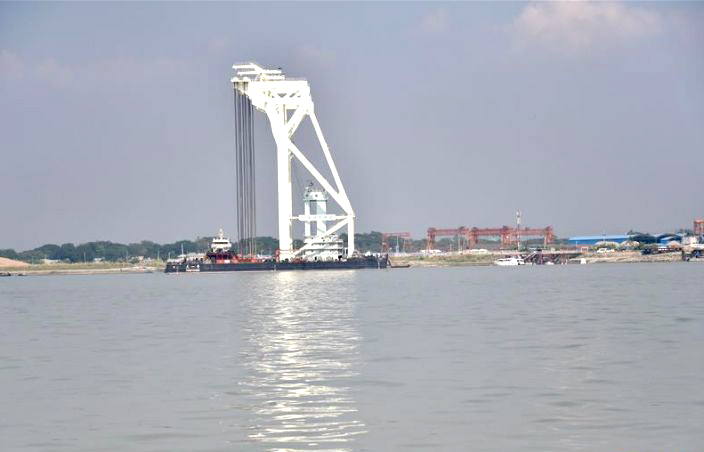‘Belt and Road’ provides new ideas for development in South Asia

China’s floating crane “Tianyi” arrives at the construction site of the Padma Bridge in Bangladesh. Connecting its capital with the south areas, the bridge is the largest infrastructure program in the nation’s history.
The International Symposium on the “Belt and Road” initiative in South Asia was held by Shandong University (SDU) from Nov. 26 to 27 in eastern China’s Shandong Province.
Participants in the symposium discussed such issues as South Asia’s role in promoting the “Belt and Road” initiative and how to form a joint force for development while reserving disagreements.
Song Dexing, a professor of international strategy from the Nanjing University of International Relations, said China encourages all the countries along the proposed routes to take a “free ride” and cooperate in a mutually beneficial way. At the same time, the initiative also brings a great opportunity for the area’s development. These two factors give the countries in South Asia a new way to explore how to resolve domestic problems, handle relations with great powers and form individual national strategies for development, Song said.
Zhang Shulan, director of the Center for South Asian Studies at SDU, said the “Belt and Road” initiative will help the South Asian countries to share in the dividends of China’s development while improving the economic, political and security environment in South Asia. There are benefits for development and security, and Pakistan is an example of successful cooperation in this area, she said.
South Asian countries are the southwestern neighbors of China, and whether they serve as nodes or channels, the success of connectivity in this area will significantly affect the connectivity that the “Belt and Road” initiative aims to achieve as a whole, said Wen Defu, a professor of South Asian studies from Sichuan University.
Tang Mengsheng, director of the Center for Pakistan Studies at Peking University, said strengthening the mutual political trust among the nations along the proposed routes will lay the foundation for the “Belt and Road” initiative. It is also the key to successfully establishing the China-South Asia community of common destiny, he said, adding that economic mutual benefit and personnel exchanges are two ways to promote mutual trust.
Academia should consider the “Belt and Road” initiative in South Asia not just from the perspective of international relations and geopolitics, Zhang said. Scholars should take into account other possible aspects in which the initiative may be affected, such as political, economic and social issues in South Asia, she said.
